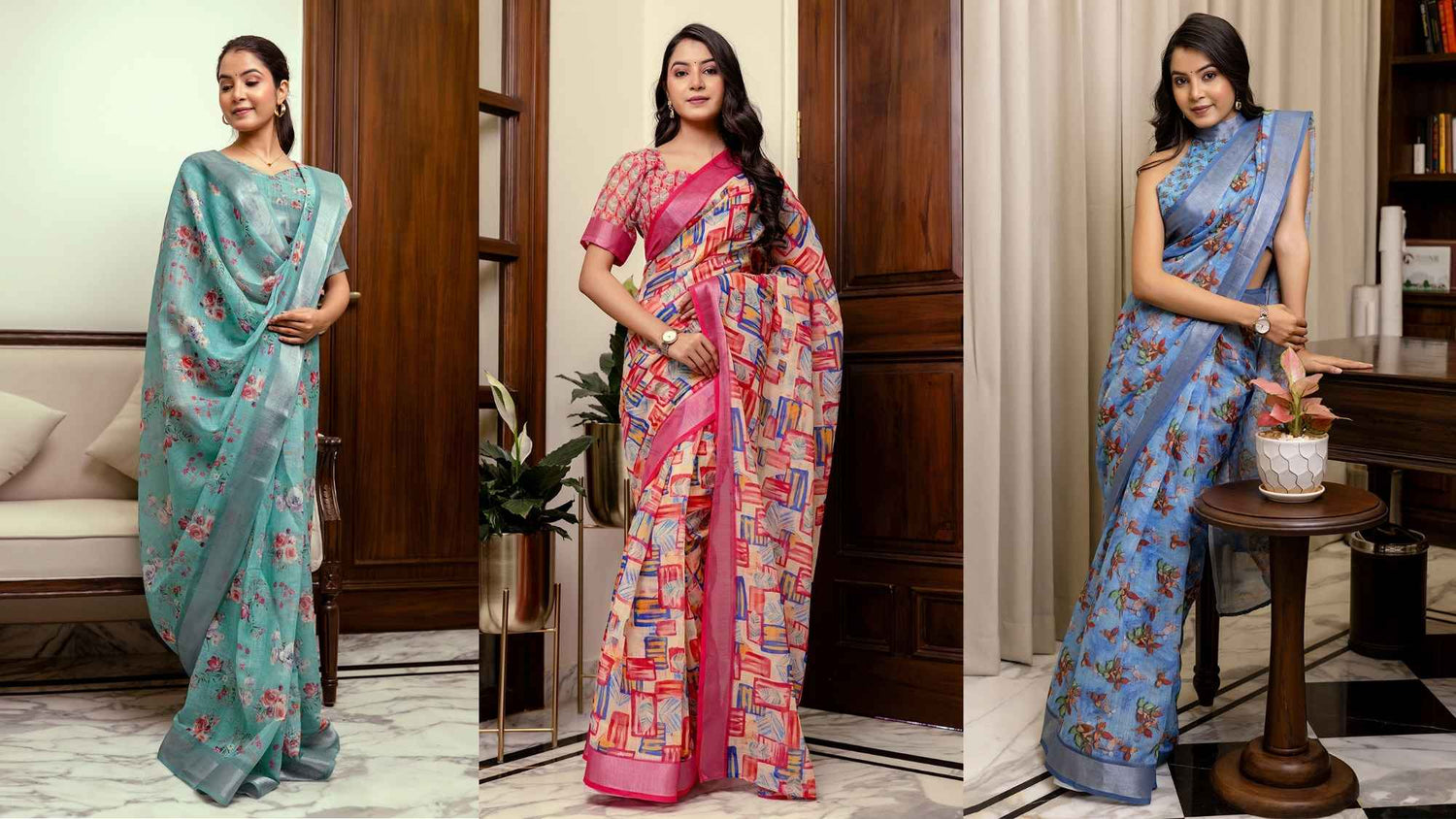Designer sarees have long been a symbol of elegance, grace, and cultural richness in India. They are the type of traditional attire that has evolved over centuries to adapt to modern fashion trends while retaining their timeless charm.
Designer sarees, in particular, are celebrated for their unique designs, complicated work, and the finesse of the craftsmanship involved. They are often the go-to choice for special occasions such as weddings, festivals, and formal gatherings.
This blog looks into the world of Sudathi designer sarees, exploring their history, the types of designer sarees available, the craftsmanship behind them, and tips on how to style them for various occasions.
A Glimpse into the History of Sarees
The saree, a traditional garment worn by women in India, has a history that dates back over 5,000 years. Its origins can be traced to the Indus Valley Civilization, where women draped themselves in a single piece of cloth.
Over the centuries, the saree evolved, influenced by various family and cultures that ruled the Indian subcontinent. Each region developed its own unique style of weaving, draping, and designing sarees, giving rise to an excess of saree varieties that we see today.
Types of Designer Sarees
Designer sarees are a blend of traditional techniques and modern aesthetics. They come in various styles, each with its unique characteristics and appeal. Here are some popular types of Sudathi designer sarees:
- Banarasi Sarees
- Kanjeevaram Sarees
- Chanderi Sarees
- Georgette Sarees
- Net Sarees
Craftsmanship Behind Designer Sarees
The creation of designer sarees is an art form that involves complicated craftsmanship and attention to detail. Skilled artisans spend weeks, sometimes months, crafting a single saree. Here’s a look at some of the key techniques used in designing these beautiful garments:
1) Weaving
Weaving is the foundation of saree making. Traditional handloom weaving techniques are used to create sarees with involved
patterns and motifs. Each region in India has its own weaving style, such as the jacquard weaving of Banarasi sarees or the interlock weaving of Kanjeevaram sarees.
2) Embroidery
Embroidery adds a decorative element to sarees. Techniques such as zari, zardozi, and aari work are commonly used in designer sarees. Zari involves weaving metallic threads into the fabric, while zardozi is a form of heavy metal embroidery. Aari work, on the other hand, involves using a needle to create fine, detailed designs.
3) Dyeing and Printing
Dyeing and printing techniques are used to add colour and patterns to sarees. Traditional methods like tie-dye (bandhani), block printing, and batik are often employed. These techniques not only add vibrant colours to the sarees but also create unique patterns that enhance their beauty.
4) Beadwork and Sequins
Beadwork and sequins are used to add a touch of sparkle and glamour to designer sarees. These embellishments are carefully sewn onto the fabric, creating complicated patterns and designs that catch the light beautifully.
Styling Designer Sarees for Special Occasions
Styling a designer saree requires careful consideration of the occasion, the saree’s design, and the accessories that complement it. Here are some tips on how to style designer sarees for various special occasions:
1) Weddings
Weddings are grand events that call for equally grand attire. For a wedding, go for a rich Banarasi or Kanjeevaram saree in vibrant colours like red, maroon, or gold. Pair it with traditional gold jewellery, such as a choker necklace, bangles, and jhumkas (dangling earrings). A neatly tied bun ornament with fresh flowers adds a classic touch to the look.
2) Festivals
Festivals are the perfect time to showcase your collection of designer sarees. Choose a lightweight Chanderi or Georgette saree in bright, festive colours. Add a statement necklace and a pair of earrings to complete the look. For a more traditional festival like Diwali or Navratri, you can go for sarees with elborate embroidery and beadwork.
3) Parties and Receptions
For evening parties and receptions, net sarees or georgette sarees with sequins and beadwork are an excellent choice. These sarees have a modern appeal and can be styled with contemporary jewellery pieces, such as chandelier earrings and cocktail rings. A sleek clutch and high heels will add to the glamour division.
4) Formal Gatherings
Designer sarees are a great choice for formal gatherings and corporate events. Go for a saree with fine embellishments and a sophisticated colour palette, such as pastels or deep blues. Pair it with minimalistic jewellery and a chic updo to keep the look elegant and polished.
Caring for Your Designer Sarees
Designer sarees are delicate and require special care to maintain their beauty and longevity. Here are some tips to help you care for your prized sarees:
1) Storage
Store your sarees in a cool, dry place away from direct sunlight. Use muslin or cotton cloth to wrap them, as plastic covers can trap moisture and cause the fabric to get worse. For sarees with heavy embroidery or embellishments, it's best to store them flat to prevent the work from getting damaged.
2) Cleaning
Dry cleaning is recommended for most designer sarees, especially those with complicated work. For silk sarees, avoid washing them at home, as water can damage the fabric and the colours. For minor stains, use a gentle fabric cleaner and dab the stain lightly without rubbing.
3) Handling
Handle your sarees with clean hands to avoid transferring oils or dirt to the fabric. When draping, be gentle to avoid pulling or stretching the delicate material. It's also a good idea to air out your sarees every few months to prevent any smelly odours from developing.
Conclusion
Designer sarees from Sudathi offer a perfect blend of tradition and modernity, making them ideal for any special occasion. The rich history of sarees, combined with the exceptional craftsmanship and complicated techniques, ensures each piece is unique and timeless.
Whether it's a grand wedding, a festive celebration, or a formal gathering, there's a designer saree to suit every event, complemented by the right styling and accessories. Caring for these graceful garments is essential to maintain their beauty and elegance. With proper storage, cleaning, and handling, your designer sarees will remain clean for years to come.
Embrace the elegance and cultural richness of Sudathi designer sarees, and let them elevate your style for every special occasion.











